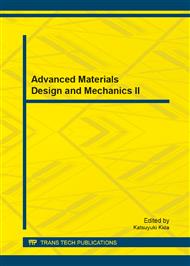p.111
p.115
p.119
p.123
p.128
p.132
p.136
p.143
p.149
Surface Modification and Characterization of Photodegradable Polystyrene-TiO2 Nanocomposites
Abstract:
In this study, polystyrene (PS) nanocomposites with TiO2 and surface-modified TiO2 nanoparticles were prepared by compression molding method. TiO2 nanoparticles were modified by 3-(methacryloxy) propyl trimethoxysilane (MPS). The resulting nanocomposite thick films were compared with pure polystyrene. It was found that MPS-modified TiO2 nanoparticles were better dispersed in PS matrix due to their hydrophobic characteristics. The addition of small amount of TiO2 nanoparticles could greatly decrease the optical bandgap of PS from 4.0 eV in pure PS to less than 3.0 eV in PS-TiO2 nanocomposite. The effects of surface modification and UVC irradiation on the physical properties and the degradation of nanocomposites were investigated.
Info:
Periodical:
Pages:
128-131
Citation:
Online since:
August 2013
Keywords:
Price:
Сopyright:
© 2013 Trans Tech Publications Ltd. All Rights Reserved
Share:
Citation:


